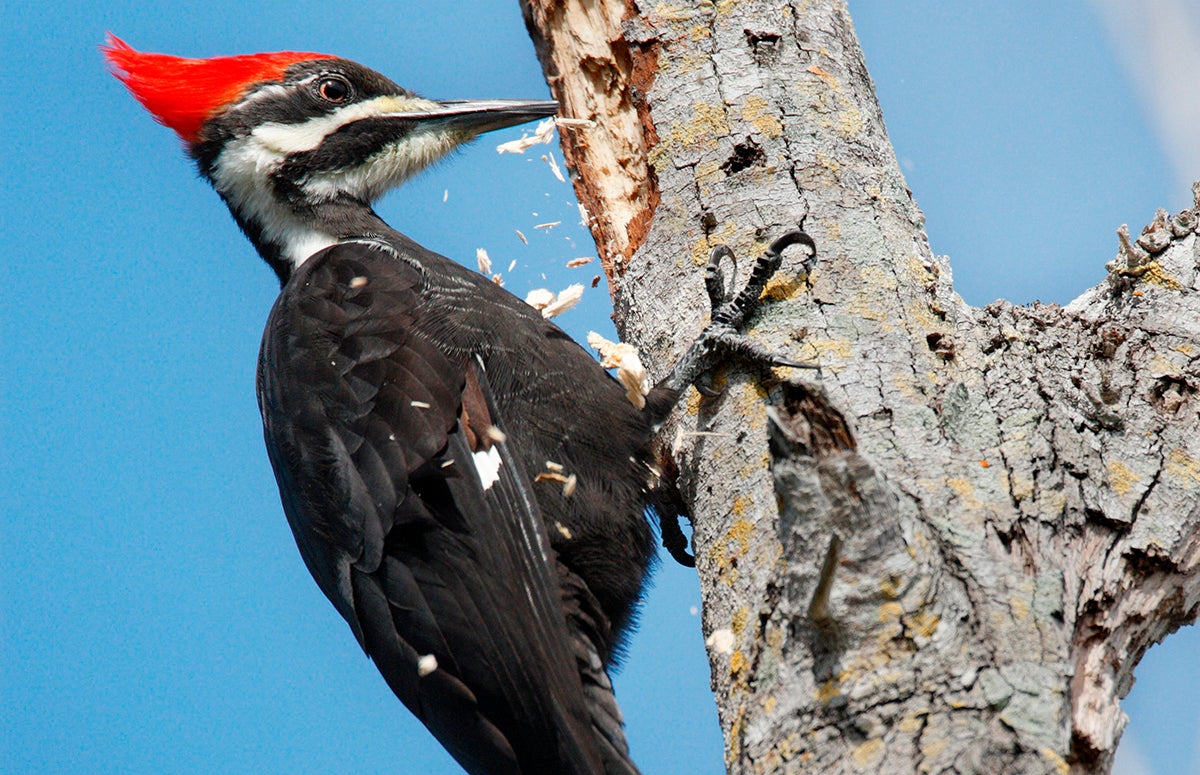Checking Out Woodpeckers in Florida Habitats: Where to Identify These Birds
Discover the Remarkable World of Woodpeckers: Every Little Thing You Required to Know
The world of woodpeckers is a world filled with special behaviors, elaborate adjustments, and a diverse range of varieties. From their habitats and distribution patterns to their feeding routines and specialized physiological features, woodpeckers have long mesmerized the passion of ornithologists and nature fanatics alike.
Woodpecker Habitats and Circulation
In North America, for instance, woodpeckers can be spotted in both coniferous and deciduous forests, using their strong beaks to forage for insects and develop nesting tooth cavities in trees. In Africa, particular woodpecker species have adapted to arid settings, such as the acacia woodlands, where they play a critical duty in regulating insect populaces.

Feeding Behaviors and Diet Regimen
Amongst the numerous aspects of their habits, woodpeckers display distinctive feeding practices and nutritional preferences. These birds are largely insectivores, with a diet regimen that consists of ants, beetles, caterpillars, and various other pests located in trees. Woodpeckers use their solid beaks to drill into the bark of trees, probing for insects and larvae concealed under the surface area. In enhancement to bugs, woodpeckers likewise take in nuts, seeds, fruits, and sap. Some species have actually specialized tongues with barbed suggestions that assist them extract insects from holes in timber.
Woodpeckers are understood for their drumming behavior, which offers not only to communicate with various other woodpeckers yet likewise to locate food. The quick drumming sound is produced by the bird pecking on resonant surface areas like dead trees or steel poles. This actions can draw in insects concealed in the wood, allowing the woodpecker to detect their visibility and eat them.
Distinct Adjustments for Tree Climbing
In their proficient quest of pests concealed within tree bark, woodpeckers have actually advanced remarkable anatomical features that equip them with distinct adaptations for effective tree climbing. Woodpeckers have solid neck muscle mass and an one-of-a-kind head framework that soak up the influence of consistent pecking, permitting them to climb up up and this hyperlink down without triggering damage to their brains. These adaptations showcase the amazing More Bonuses evolutionary design that enables woodpeckers to browse trees with accuracy and performance.
Diverse Woodpecker Types Worldwide
With over 200 various types spread across numerous environments worldwide, the household of Picidae includes an exceptional diversity of woodpeckers. These birds can be found in forests, timberlands, savannas, and also metropolitan areas, showcasing their adaptability to various settings. From the famous Northern Flicker in The United States And Canada to the vibrant and elusive Crimson-backed Flameback in Asia, each woodpecker varieties displays distinct qualities in terms of tuft, habits, and habitat choice.
Woodpeckers differ significantly in dimension, with the petite Downy Woodpecker determining around 6-7 inches in length, while the effective Lineated Woodpecker can reach up to 17 inches - Woodpeckers in Florida. Their beaks also can be found in various sizes and shapes, showing their feeding practices. Some varieties concentrate on drawing out insects from tree bark, like the Acorn Woodpecker, while others, such as the Black-cheeked Woodpecker, prey on fruits and seeds

Preservation Efforts and Challenges
Preservation efforts for woodpecker populaces are essential in reducing the effect of environment loss and various other threats dealing with these diverse avian types. Woodpeckers encounter different difficulties to their survival, mainly because of logging, urbanization, environment modification, and intrusive varieties. To resolve these problems, preservation initiatives concentrate on safeguarding and recovering woodpecker environments, executing lasting forestry techniques, and raising understanding concerning the value of these birds in ecosystems.
One significant challenge in woodpecker preservation is the fragmentation of their environments, causing read here isolated populations that are more at risk to termination - Woodpeckers in Florida. Guardians work to create wild animals passages and safeguarded areas that attach these fragmented environments, enabling woodpeckers to move in between different areas for feeding, reproducing, and shelter

Final Thought
In conclusion, woodpeckers are fascinating birds with distinct adaptations for tree climbing and feeding actions. More research study and conservation actions are required to make certain the survival of woodpeckers in the wild.